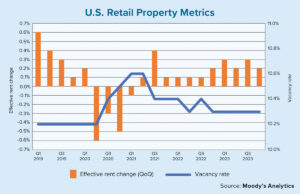In today’s strong economy, lenders and investors are looking for yield, and credit unions are no exception. Last year, credit unions significantly expanded their presence in commercial real estate financing, a trend that is well worth your attention.
Credit unions tend to have more flexible lending criteria and, during this record-shattering market expansion, have claimed a niche middle ground between high-cost private money lenders and the rigidity of banks and commercial mortgage-backed securities (CMBS) lenders. Credit unions, as depository institutions, tend to be risk averse, however, and the outlook for the U.S. economy is far from certain.
Credit unions are better known for their consumer and residential loans. They are typically smaller in size than most banks and usually serve a particular city, region or group of people. Like other institutional investors, however, credit unions have recognized that they are able to achieve a better risk-adjusted return by lending against commercial real estate, compared to other asset classes.
Credit unions increased their commercial real estate holdings in 2018 by 16.5% to a total of $65.6 billion, according to the Credit Union Times. And the growth of commercial real estate lending last year by credit unions was faster than that of banks. That said, credit unions’ footprint in the commercial real estate lending space is still small compared to the $2.33 trillion in such loans held by banks, as reported by the Federal Deposit Insurance Corp.
It seems unlikely that credit unions will see demand fall for their commercial mortgages. For borrowers, credit unions offer several advantages over traditional banks. Credit unions typically have more flexibility with terms and loan structures. Credit unions, for example, tend to not impose a prepayment penalty, giving the borrower more flexibility to sell or refinance the property in line with the borrower’s market strategy and time frame, as opposed to a pre-determined term based on the loan origination date.
Hence, a commercial real estate loan from a credit union can be an excellent middle-ground alternative between a floating-rate bridge loan from a debt fund that allows for flexibility, but without the ability to fix the interest rate; and a fixed-rate bank loan that comes with a steep prepayment penalty and loan covenants that effectively lock the borrower into a longer time horizon than they desire.
Expansion opportunities
All four of the major commercial asset classes, to varying degrees, present opportunities for credit unions to expand their lending footprint. The outlook for the office sector, for instance, is strong in the near term, according to commercial real estate data company CoStar.
CoStar reported that vacancy rates for office properties fell to the single digits at the end of last year for the first time since the early 2000s. Demand for office space has grown with the surge in office jobs. The growth in supply of office space has been modest in most areas of the country, with the exception of New York City and a few gateway metro areas, CoStar reported.
Meanwhile, the industrial sector has been the most sought-after asset type due to the rise of e-commerce and the need for warehouse space. The demand for industrial space exceeded the supply for 32 out of the last 33 quarters as of third-quarter 2018, according to CBRE.
Retail tells a mixed story. The retail sector is challenged by the massive growth of Amazon.com and other e-commerce companies. Traditional brick-and-mortar retail has been adapting to new technology and changes in consumer tastes, although it remains an in-demand asset, according to commercial real estate research company Situs.
The multifamily-housing sector has for several years performed well in terms of asset-value appreciation, occupancy levels and rental growth. As of first-quarter 2019, multifamily had the lowest capitalization rates among property types, suggesting higher asset prices and strong investor demand, Situs reported. Multifamily is traditionally a lower-risk asset for investors. In terms of financing multifamily deals, credit unions face stiff competition from banks and CMBS lenders, as well as Fannie Mae and Freddie Mac. Market interest rates for such loans are typically lower than what credit unions are willing to offer.
A shift in investor buying patterns generally plays to the strength of credit unions. The top markets for investors seeking solid, low-risk returns have typically been in the smaller and mid-sized markets, where credit unions tend to be especially active. Examples include the South Carolina cities of Greenville, Spartanburg and Anderson; the Interstate 4 corridor in central Florida; and the Shenandoah Valley/I-81 corridor in Virginia. Other larger cities with strong commercial real estate opportunities include Las Vegas, Seattle and St. Louis. These are markets where fundamentals are favorable for borrowers and lenders alike.
A coming downturn?
One wild card that might cause credit unions to pull back from commercial real estate is the possibility of an economic downturn. These days it seems everyone is on the lookout for the next recession. The U.S. economy has now experienced its longest period of expansion — 121 months as of this past July. Economists, investors and businesses remain understandably cautious about what might be looming.
The length of the current economic cycle has led some to wonder just how long it can last. Some analysts say that a recession will likely come next year, while others believe the economy will continue to expand at a slow and steady pace for the foreseeable future. It is important to recognize that, as OppenheimerFunds pointed out in an article, economic cycles do not have a maturity date, nor do they die of old age. They end because of a policy misstep or oversupply in the financial system.
The possibility of a policy mistake is lower now than it was leading up to past recessions. The Federal Reserve and Congress have applied the lessons of the last downturn through monetary and banking policies designed to prevent another financial meltdown.
According to the OppenheimerFunds analysis, several signs point to continued slow and steady growth. Recently, the Fed reversed its monetary tightening, signaling it won’t continue raising short-term rates as aggressively. That implies there is little excess cash or credit in the system. Also, there are no apparent looming credit events in the market. Credit growth has been modest. The balance sheets of commercial real estate lenders are strong. Collateral leverage and debt coverage are sound, and household debt is still manageable.
The recent chatter about the possibility of a recession can largely be attributed to the yield curve. The spread between the three-month and 10-year Treasury yields inverted late this past March and again this past May. As pointed out by Situs, such inversions correctly predicted seven U.S. recessions, but inversions in 1966 and 1998 did not lead to recessions. In fact, according to data from the Fed, inversions frequently have not been accurate indicators of a recession. Given the current condition of the economy, it is unlikely that we will see a recession anytime soon.
The U.S. economy continues to grow at a healthy rate. Economic fundamentals remain sound as evidenced by low inflation, a steady low unemployment rate, healthy job creation, recent wage increases and consumer confidence. There also appears to be room for growth in stock values and overall wealth. As the fundamentals stay strong and consistent, both lenders and investors in commercial real estate should see healthy returns in the retail, industrial, office and multifamily sectors.
The outlook for commercial real estate lending and the domestic economy looks positive for the remainder of 2019. Commercial lending and gross domestic product growth are signaling a return to slow, consistent growth that may last well into the future — all signs suggesting that credit unions will continue to be active players in commercial real estate.
As credit unions continue to seek out additional lending opportunities and their level of sophistication increases, their portfolio balances of commercial real estate loans should continue to grow. Many larger credit unions have already established dedicated commercial real estate lending departments as a significant component of their overall growth strategy.
• • •
Once narrowly focused on consumer lending, credit unions have increasingly recognized the wisdom of diversifying into commercial real estate as part of a balanced strategy for safe growth. As a commercial mortgage broker, the ongoing presence of credit unions in this space will provide more options for your borrowers.
Author
-
Dan Gushue is chief credit officer of Extensia Financial, one of the nation’s premier credit union service organizations that specializes in commercial and multifamily real estate lending nationwide. With a unique balance of skills as a lender and a former business-development professional, Gushue understands the importance of building a business while balancing sound credit quality. He is responsible for daily oversight and management of production operations within Extensia Financial, in addition to monitoring and aligning policies and procedures toward sound credit quality.





